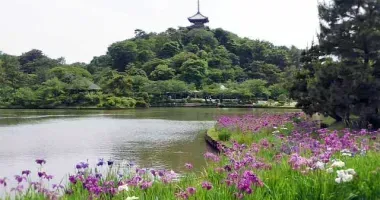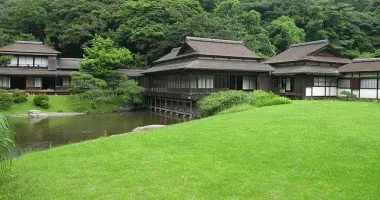Sankeien Garden Yokohama
- Published on : 21/05/2017
- by : Japan Experience
- Youtube
Sankeien Garden is Yokohama's number one traditional attraction: a beautiful natural-style garden full of old cultural and architectural treasures.
Sankeien Garden 三渓園
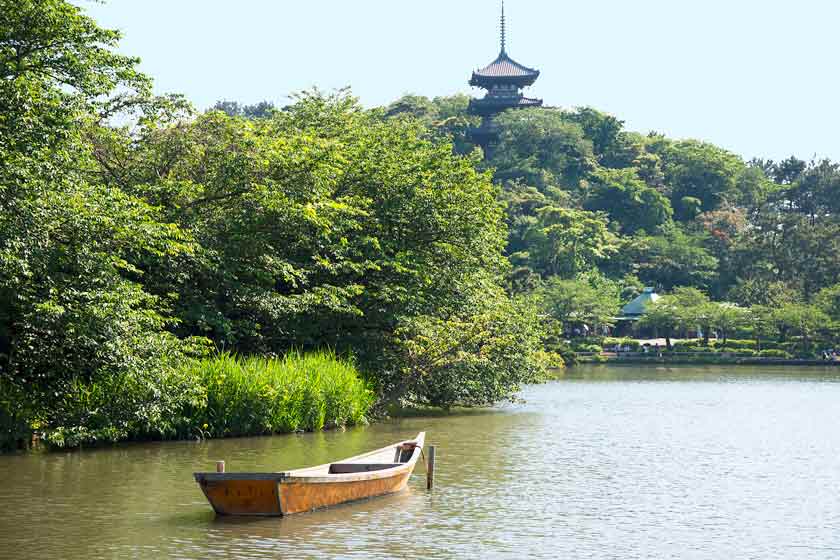 Boat on Main Pond, Sankeien Garden, Three-Story Pagoda behind.
Boat on Main Pond, Sankeien Garden, Three-Story Pagoda behind.
Sankeien Garden in Naka ward, Yokohama, is the city's most charming traditional attraction, with something for nature lovers, Japanese history and culture buffs, photographers, and anyone with an eye for beauty.
Sankeien Garden is 17.5 undulating hectares (over 42 acres) of groves, traditional old Japanese structures, gardens, ponds, waterfalls, bridges, refreshment spots and a museum, connected by rambling paths and footbridges.
History
Sankeien was established in 1902 by Yokohama businessman, Sankei Hara (1868-1939), on land passed down by his grandfather. Construction took two decades, and incorporated numerous structures of historical and cultural significance, such as ancient houses, villas, tea rooms, arbors and shrines, from all over Japan.
Hara had close ties to leading cultural figures of the day, and a large part of the garden's purpose was to foster the arts - a role that Sankeien very much plays even today.
Japanese culture is profoundly nature-inspired, and the garden's variety of natural assets: flowers, trees, and wildlife, ensure a panoply of inspiring sights, sounds, and even scents, throughout the year, from cherry blossom in spring, to roses in summer, to daffodils in winter, to name a few - accompanied by all the wildlife that makes Sankeien its home, and its many sounds.
Sankei Garden was badly damaged in War War II, and in 1953 the Hara family turned it over to the Sankeien Hoshokai foundation, which restored the Garden to almost its original state.
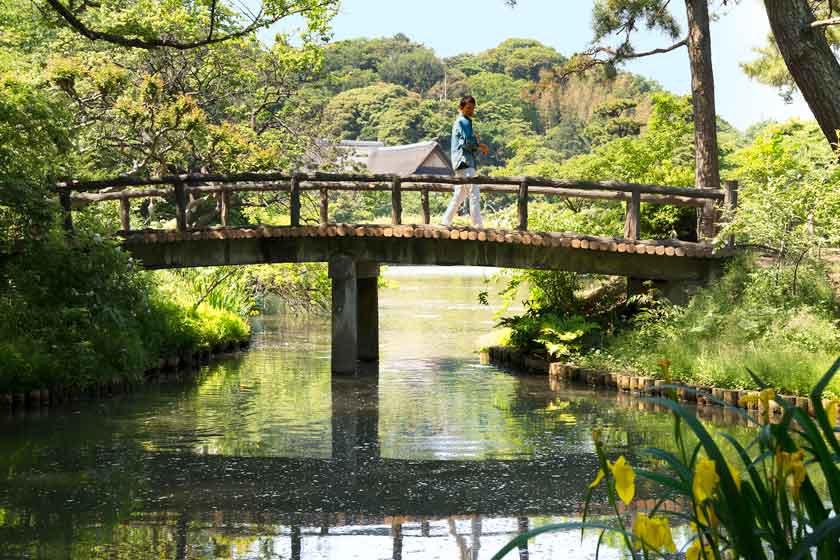 Bridge on the Main Pond, Sankeien Garden
Bridge on the Main Pond, Sankeien Garden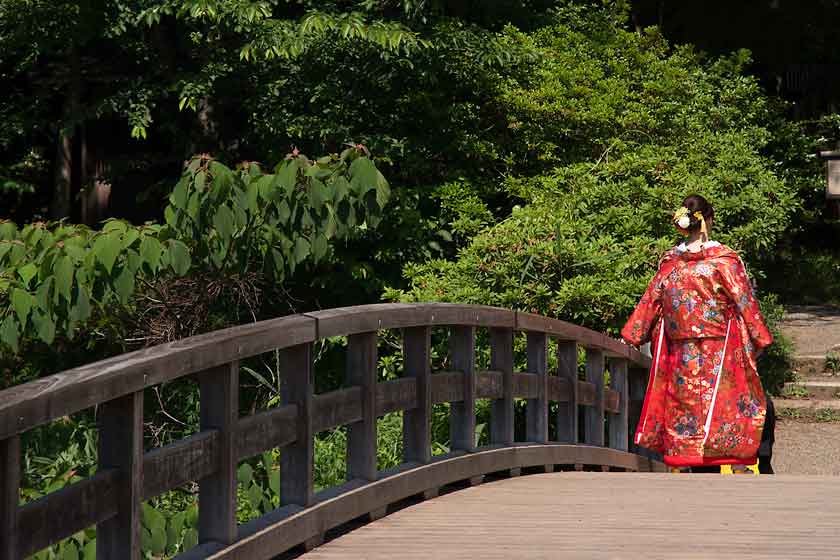 Woman in kimono, Sankeien Garden
Woman in kimono, Sankeien Garden
Sankeien Attractions
The Main Pond forms the focus of Sankeien, and is the first major feature if entering by the Main Entrance, at the garden's northern end.
At the end of the Main Pond from the Main Entrance, if you take the right-hand path, is the Sankei Memorial, a modern multi-purpose facility with refreshments (including traditional tea) and, most importantly, a museum to the garden's founder, Sankei Hara, as well as an exhibition room with changing displays of arts and crafts, and a tasteful souvenir store.
Behind and up the small hill from the Sankei Memorial complex is the Inner Garden, which used to be the exclusive preserve of the Hara family. The Inner Garden is the where most of Sankeien's exquisite architecture is to be found, in about a dozen places, enclosed in beautiful green groves. Some buildings date as far back as the sixteenth and seventeenth centuries.
Across from the Inner Garden, on the other side of the small valley that goes through Sankeien's southern half, is the hill on the west side, topped by the Three-Story Pagoda of Old Tomyoji. The area around it is called the Outer Garden and used to be the only area open to the public. Be sure to visit the Outer Garden's Former Yanohara House, which is one of Japan's largest extant gassho (traditional A-frame) houses, and the only house in the Garden permanently open to the public. The Former Yanohara House was transported from Shirakawa-go village (now a UNESCO site) in 1960, and is a rawly authentic Japanese country house, chock-a-block with the old tools, implements, clothes, vessels and other paraphernalia of everyday farm life, upstairs and down. There is even a smoky, open hearth that is kept burning in the kitchen.
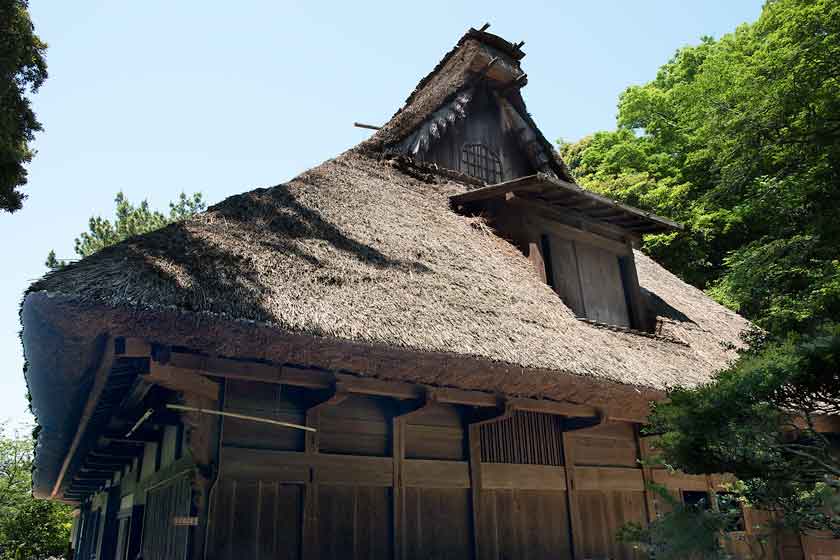 Former Yanohara House, Sankeien Garden, Yokohama, Japan
Former Yanohara House, Sankeien Garden, Yokohama, Japan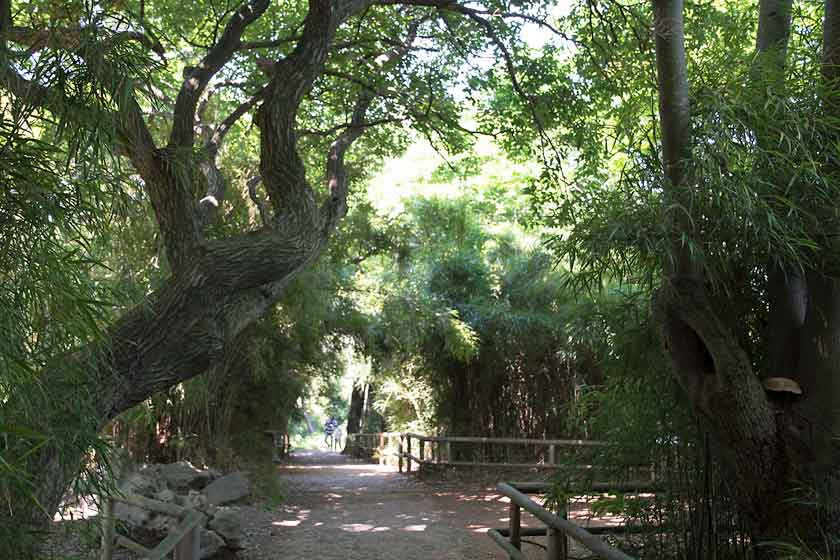 Southern valley of Sankeien Garden, Yokohama, Japan
Southern valley of Sankeien Garden, Yokohama, Japan
South Entrance
There is also a South Entrance to Sankeien, to be used if you make the 25-minute walk from Negishi Station. Entering by the South Entrance, you see the cliffs that form the southern end of the garden. Also, if you enter by the South Entrance, you will find yourself in the valley between the Inner and Outer Gardens, and the Main Pond a few minutes' walk further on.
Allow at least a couple of hours to see Sankeien. It is a big garden, and if you're in a leisurely mood, even three hours won't seem too long.
Sankeien has information available in several languages, and nearly all signs have both Japanese and English.
In the warmer months, enjoy the sight of kimono- and yukata-clad young couples having wedding photos taken in picturesque spots throughout the Garden.
Hours and Admission
Hours: 9am - 5pm (last admission at 4.30pm). Open every day of the year except December 29, 30, 31.
Open until 9pm (last admission at 8.30pm) late-May to early-April during the firefly season.
Admission: 700 yen for adults (visitors 15 years old and above), 400 yen for visitors 14 years old and below.
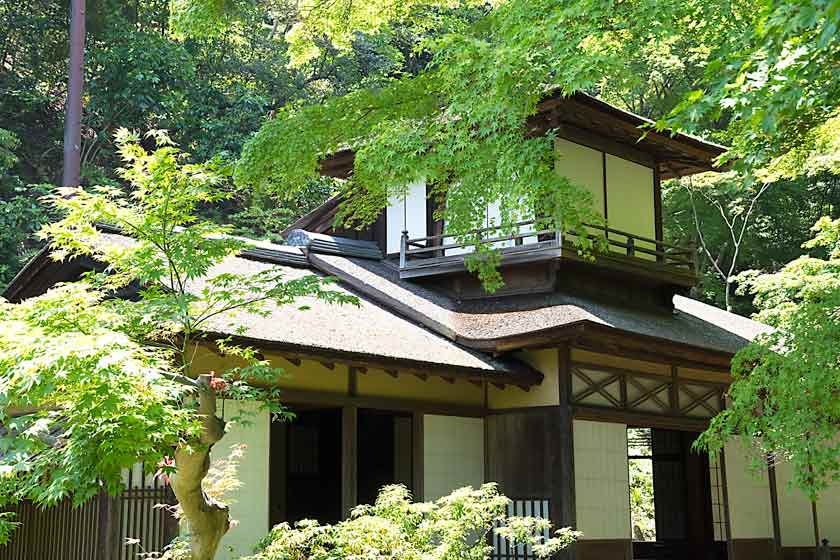 Choshukaku, a uniquely designed 17th century structure in Sankeien
Choshukaku, a uniquely designed 17th century structure in Sankeien
Access
From Yokohama Station
From the East Exit of Yokohama Station cross the pedestrian bridge all the way across the road (and under the overhead highway) to the Sogo Department Store building. The Yokohama Municipal Bus Station is on the 1F (ground floor). From No.2 bus stop, take bus no.8 or 148. Get off at Sankeien Iriguchi (the last stop). Takes about 35 minutes.
Weekends and public holidays only: the "Burari Sankeien Bus" also leaves from No.2 bus stop to Sankeien.
The above buses all stop off on the way at the Sakuragicho Station bus terminal, the Akarenga, and Chinatown ("Chukagai-iriguchi" bus stop), besides other stops. The bus fare is 220 yen for adults, Suica/Pasmo cards accepted.
From Negishi Station
From Negishi Station (on the Negishi Line, 11 minutes from Yokohama Station), take bus no.58, 99 or 101 fro bus stop no.1. Takes about 10 minutes. You can also walk from Negishi Station - about 25 minutes. Go to the main road in front of the station, cross it, go right (i.e., east), and follow the overhead highway until you see parkland. Take the walk bridge across the pond to get to the South Entrance.
If coming by car, the Honmoku City Park parking lot is right beside the Main Entrance of Sankeien, and a small hourly charge applies.
Sankeien, 58-1 Honmokusannotani, Naka-ku, Yokohama-shi, Kanagawa-ken 231-0824.
Tel. 045 621 0634/5
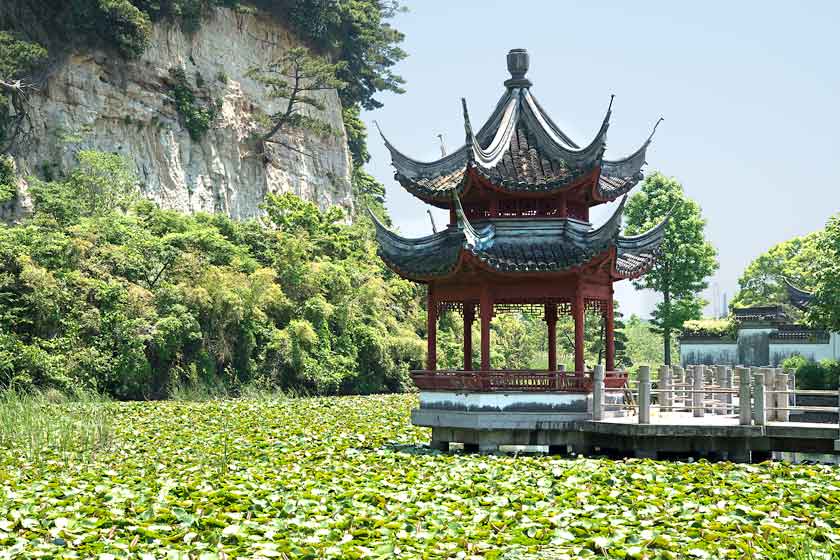 Honmoku City Park, for access to the South Entrance of Sankeien
Honmoku City Park, for access to the South Entrance of Sankeien
Nearby Sankeien
Pagoda in lotus pond, Honmoku City Park (本牧市民公園) at the southern end of Sankeien features a beautiful lotus pond with a pagoda, and a footbridge across it to the South Entrance of Sankeien.
The Yokohama Ceramics Center (Yokohama-shi Tougei Center 横浜市陶芸センター, tel. 045 623 8904) is in Honmoku City Park, and offers pottery making and pottery painting classes.




